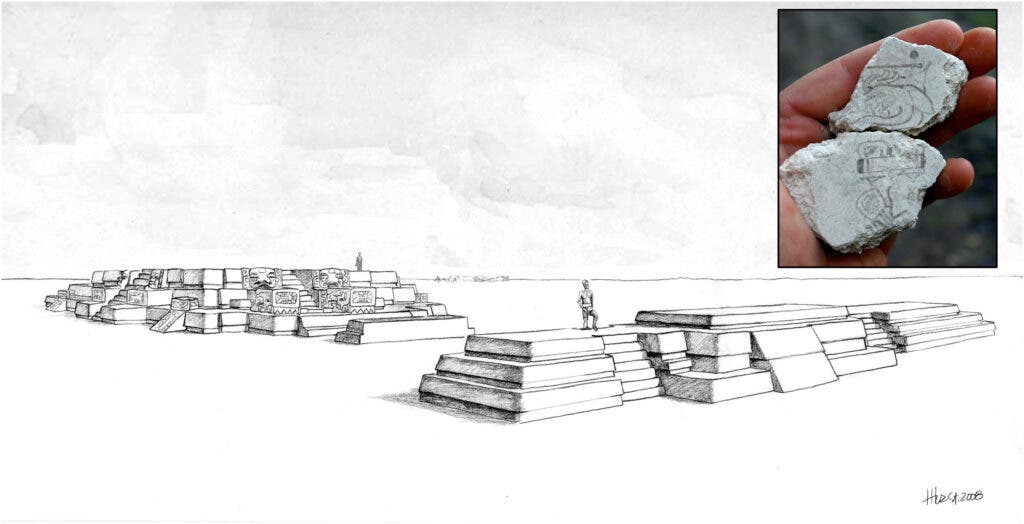Amid a ton of rubble buried beneath a Maya pyramid in Guatemala, archaeologists found the earliest-known use of the Maya calendar – one of the most renowned achievements of this ancient culture.

The researchers found a broken piece of plaster with a glyph painted on it. A bard-and-dot symbol for the number seven is painted above a deer heard, representing “7 Deer” — a date in the 260-day Maya calendar system. The glyph dates from the third century BC, the oldest known used of the calendar system once used by many cultures.
The fragments are the remains of a set of murals that once adorned the walls of a temple in what’s now Guatemala. But sometime in the 200s BCE, the Maya destroyed the plaster and razed the buildings to the ground. Over the ruins of the temple, they piled tons of tock, mud and broken plaster to fill in the foundation of a new pyramid.
“The calendar has long been a key element in the traditional definitions of Mesoamerica as a cultural region, and its persistence in many communities up to the present day stands as a testament of its importance in religious and social life,” the team of researchers from the University of Texas at Austin wrote in their paper.
The Mayan calendars
The researchers found the fragments at the archaeological site of San Bartolo archeological site in the jungles of Guatemala, northeast of the ancient Maya city of Tikal. The area gained fame in 2001 thanks to the discovery of a buried chamber with elaborate and colorful murals depicting Maya ceremonial and mythological scenes.
For their study, the team collected organic material within the layer where the fragments were discovered. By using radiocarbon dating, they estimated the date of the fragments. In total, they discovered about 7,000 pieces from various murals. Of this, they analyzed 11 wall fragments discovered between 2002 and 2012.

Until now, the earliest definitive Maya calendar representation dated to the first century BC. The Maya had four calendars. One is the divination calendar, or Tzolk’in, from which this “7 deer” notation originates. It has 260 days formed by a combination of 13 numbers and 20 days that have different signs (like the deer on the fragment).
The other Mayan calendars are the Long Count calendar, which tracks time cycles and created a lot of noise when some people mistakenly thought it was predicting the end of the world in 2012, the Haab, the most similar to the calendar we use today with 365 days in its count based on solar observations, and also a lunar calendar.
“The dating of the San Bartolo fragments indicates that the 260-day calendar was present in the lowland Maya region around the beginning of the Late Preclassic period. Moreover, we surmise that this system of day reckoning was already in use for some time, leading up to the third century BCE,” the researchers wrote in their paper.
The team was surprised to find the deer glyph, as later Maya notations frequently write out the word for deer rather than drawing a glyph of the animal. That’s why they believe the fragments could be evidence of an early stage of Maya script. It’s yet unclear where in Mesoamerica this calendrical system first started, they conclude.
The study was published in the journal Science Advances.









